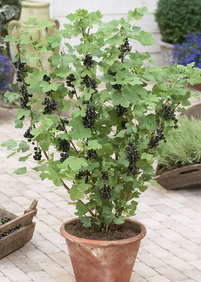Permaculture Apartment Macro Site Analysis Guide
- Naomi Stephens | Permaculture Designer

- Jul 27, 2021
- 4 min read
Updated: Apr 25, 2022
Completing a site analysis can be daunting, so it's best to start with the wider macro influences affecting your site like the weather, and then narrow it down to micro factors like where to place plants for space maximization.
I've focused on the macro in this article because there is a lot to consider.
What is Macro Permaculture Apartment Analysis?
Macro Permaculture Apartment factors consider the larger influences affecting your indoor garden, balcony, or small yard such as:
1. Waterlogging/puddling
If you're planting in a backyard then you'll need to consider waterlogging. A water-logged garden is going to ruin plants by causing root rot. Plants need to breathe too, and if roots can't get the oxygen, they will rot and die.
Waterlogging might not always be easy to see. Check for the following as indicators of a waterlogged site:
Leaves will look discolored - yellow, or brown
The leaves will start to wilt
Roots will look blue or black instead of white.
Assess your site for the following as this will help indicate whether your site may become waterlogged:
Well trodden compacted footpaths
An uneven surface in your garden
Your garden is situated at the bottom of a hill
You can also do the following test to see if you have any waterlogging issues affecting your site:
Dig a hole approximately 60cm (2 feet) deep
Fill the hole with water and leave it for four hours
If the water is still there after four hours, then you may have waterlogging concerns
Things you can do to prevent waterlogged plants:
Plant with some raised beds - you could build raised bed yourself or buy one
Plant with mulch - you could layer the ground with coconut coir which absorbs a lot of moisture.
Fit outbuildings like sheds with living roofs to absorb and slowly release moisture
Plant in containers
Try creating a place for rain to go to like a mini swale. This would be created by digging a small ditch that will divert water away from your growing area.
2. Wind
If you live on a high rise then you'll have more wind than other types of housing. As a result, try thinking about wind prevention techniques to include in your permaculture apartment site analysis.
Place a trellis to block the wind:
You can add some vining plants to the trellis and that way you can get a second yield by planting edible vining plants like:
Peas
Silvern berries
Rocoto Peppers
Nasturtium
Climbing tomatoes
Malabar Spinach
Loofah
Small Pumpkin varieties
Pole beans
Runner beans
From left to right - rocoto peppers, malabar spinach, climbing tomatoes, loofahs, nasturtium.
You could try placing windscreens on your balcony to block the wind coming through the holes
You can place tough plants like aloe veras or berry bushes to protect smaller seedlings or herbs from the wind:
from left to right - strawberry, raspberry, mulberry, blackcurrant, blackberry, acai berry, blueberry.
3. Temperature
Temperature is an important factor to consider with indoor gardens.
The best temperature for plants is 20 - 23 Fahrenheit. If the temperature rises above that, expect your soil to dry up very quickly. If you reach 30 degrees, then plants are going to start deteriorating.
Have a look at the space you'd like to place your plants and try to introduce the following factors to keep the temperatures relative:
Air circulation - using a fan or opening the windows;
Plant in open areas rather than enclosed spaces;
Air conditioning units - See here
Buy a low heat emitting grow light - This is the one I use
If your plants are on a balcony then your temperature is going to be affected mainly by the sun. See the Sun section below for ideas.
4. Humidity
Some plants love humidity and others don't its best to research this when you select the plants you'd like to grow. Generally plants like humidity and thrive in areas with 30-40% humidity.
As a rule of thumb, thin papery leaves will tend to need humidity, waxy thick plants won't need humidity.
Some plants that love humidity include:
Lemons
Ginger
Chives
Parsely
There are some natural ways you can increase humidity for plants.
When plants are grown together they are natural humidifiers, so separate them out if this isn't wanted.
Misting occasionally with a spray bottle
Place a tray with some pebbles and water
Placing plants by the kitchen area where there is likely to be steam from cooking
You can check your humidity with devices - I use:
You can also buy humidifiers and dehumidifiers.
5. Sun
Try to get an idea of where the sun will hit your property using a map like suncalc.org.
Knowing where the sun is going to fall on your property first is going to help you optimize your plants' growth.
Place sun-loving plants in the area that will receive the sunlight first and place plants that like shade in the areas that will get the sun last.
Plants like arugula/rocket, chives and radishes do well in shadier environments.
Plants like chilies and other flowering or fruit-bearing plants will like to be placed in full sun.
Be aware of signs of too much sun and look out for:
Wilting plants
Plants with white sunspots
If the plant leaves begin to curl and crisp
If sun damage happens:
Move the plants away from the sunlight
The soil will be hot and dry so water your plants.
If your plants are planted into the ground then try and place an object to provide shade.
By applying these principles, you can start planning your garden. Stay tuned for my micro permaculture site analysis guide! Subscribe at the bottom of the page for more.
Sources
_edited.png)

















































































































































Comments